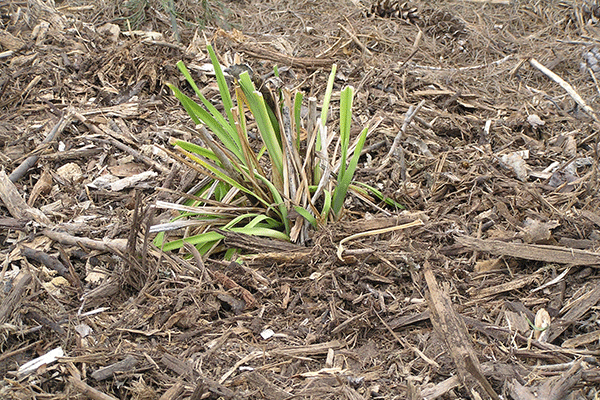Fall has officially arrived. There have already been frost advisories for the western part of the state, so it won’t be long until frosts occur here. It is at this time that you need to think about care for your plants to protect them through the winter. Here is a ‘To Do’ list to prepare your lawn and garden for winter.
Protect Young Trees
Care of newly planted trees should be considered. If it is a thin barked tree, add a tree wrap to protect it from sunscald. Sunscald is a condition that occurs during the winter with the rapid cool down at night of the cells in the trunk of the tree. The warm up can occur in the winter on warmer days but when night comes, those cells freeze and burst, causing damage to the trunk. Tree wraps will help protect young trees from this condition, but only leave the wrap on during the winter months and allow the trunk to be opened up during the summer to avoid damage from insects and disease.
Young trees would also benefit from a fence around the tree to protect it from damage from rabbits and voles during the winter months. During the winter, these critters chew on the bark of our trees which causes wounds and, in some cases, girdles the tree leading to eventual death. A 2-foot high fence of chicken wire will be sufficient to protect your tree from both of these animals. Make sure the fence is dug into the ground a couple of inches so the voles can’t get under it.
Prevent Frost Heaving
Winter mulch can be applied when temperatures are consistently dropping down to the twenties each night. Winter mulch is the heavier layer of mulch we apply to plants like chrysanthemums and strawberries to minimize soil temperature fluxuations.
Use a winter mulch on any plant prone to frost heaving - when the plant is pushed up out of the soil by repeated freezing and thawing of the soil. Plants that were just planted this fall are particularly susceptible to frost heaving, since they had little time for root development on the new site.
This mulch can be up to twelve inches deep, which is much deeper than we usually advise but is needed for winter protection. It is better to use coarse wood chips, straw, or leaves for winter mulch rather than grass. Be sure to level the mulch back down to 2-3 inches in the spring.
Minimize Disease Problems Next Year
Clean up all spent leaves of annual and perennial plants. Remove the dead plant material and compost it or dispose of it. If there was a problem with a disease or insect problem in the plant this summer, it would be best to dispose of it to reduce the problem with that insect or disease next year. Be sure to wait until the plants have turned brown in the fall before removing this plant material to allow them all the time available to build and store up sugars for next spring.
Winter Storage for Tender Bulbs
Now is the time to dig up your summer bulbs to prepare them for winter storage. Plants such as gladiola, canna, tuberous begonia, caladium, elephant ear and dahlia need to be dug up in the fall and stored indoors over the winter. Dig them prior to a hard frost, or shortly after the first frost.
Once the bulbs are removed from the ground, clean them off, removing the leaves as you clean, and cure or dry them for 2-3 weeks. Then place the bulbs in crates or boxes, allowing for air flow. Store them throughout the winter in a cool, dark location such as a basement. Check the bulbs periodically through the winter to ensure no bulbs are starting to rot or mold. If any do start to rot or mold, discard them immediately.

